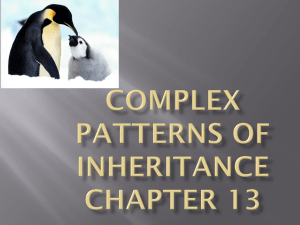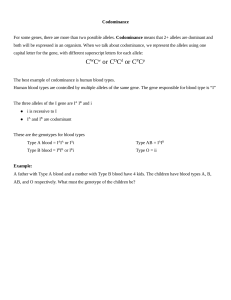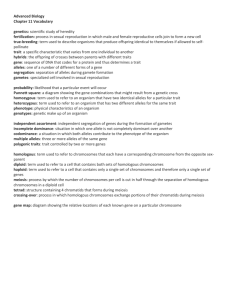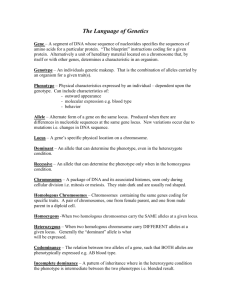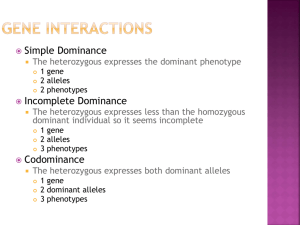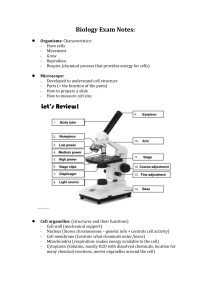SBI3U - MsKhan
advertisement
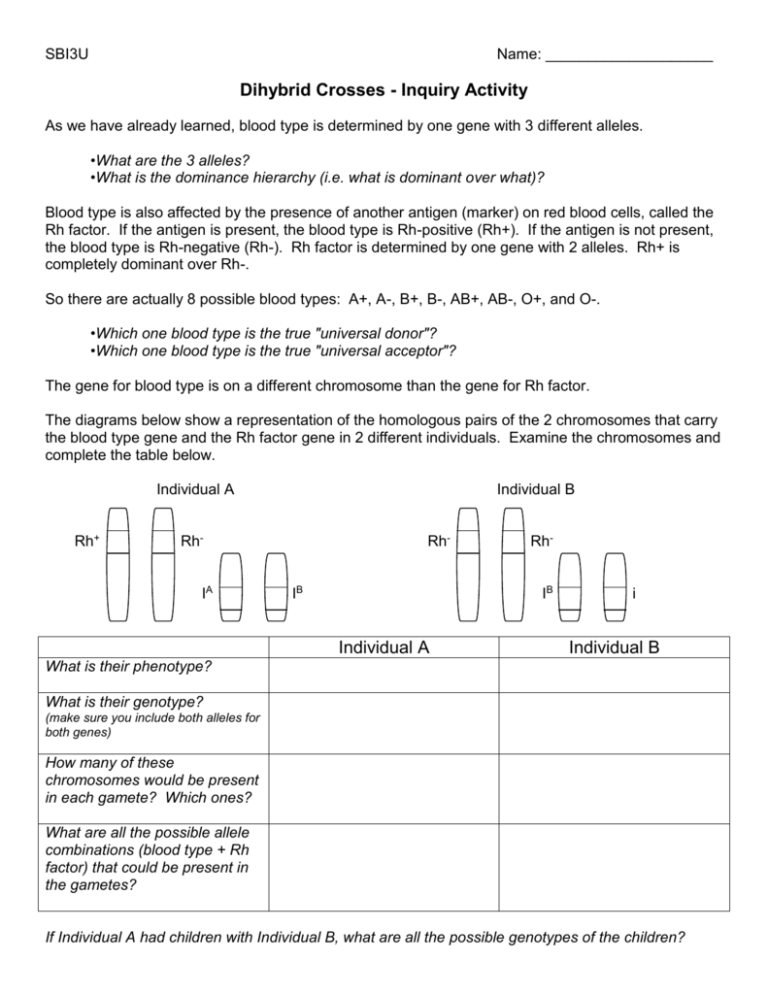
SBI3U Name: ____________________ Dihybrid Crosses - Inquiry Activity As we have already learned, blood type is determined by one gene with 3 different alleles. •What are the 3 alleles? •What is the dominance hierarchy (i.e. what is dominant over what)? Blood type is also affected by the presence of another antigen (marker) on red blood cells, called the Rh factor. If the antigen is present, the blood type is Rh-positive (Rh+). If the antigen is not present, the blood type is Rh-negative (Rh-). Rh factor is determined by one gene with 2 alleles. Rh+ is completely dominant over Rh-. So there are actually 8 possible blood types: A+, A-, B+, B-, AB+, AB-, O+, and O-. •Which one blood type is the true "universal donor"? •Which one blood type is the true "universal acceptor"? The gene for blood type is on a different chromosome than the gene for Rh factor. The diagrams below show a representation of the homologous pairs of the 2 chromosomes that carry the blood type gene and the Rh factor gene in 2 different individuals. Examine the chromosomes and complete the table below. Individual A Rh+ Individual B RhIA RhIB RhIB Individual A i Individual B What is their phenotype? What is their genotype? (make sure you include both alleles for both genes) How many of these chromosomes would be present in each gamete? Which ones? What are all the possible allele combinations (blood type + Rh factor) that could be present in the gametes? If Individual A had children with Individual B, what are all the possible genotypes of the children?

